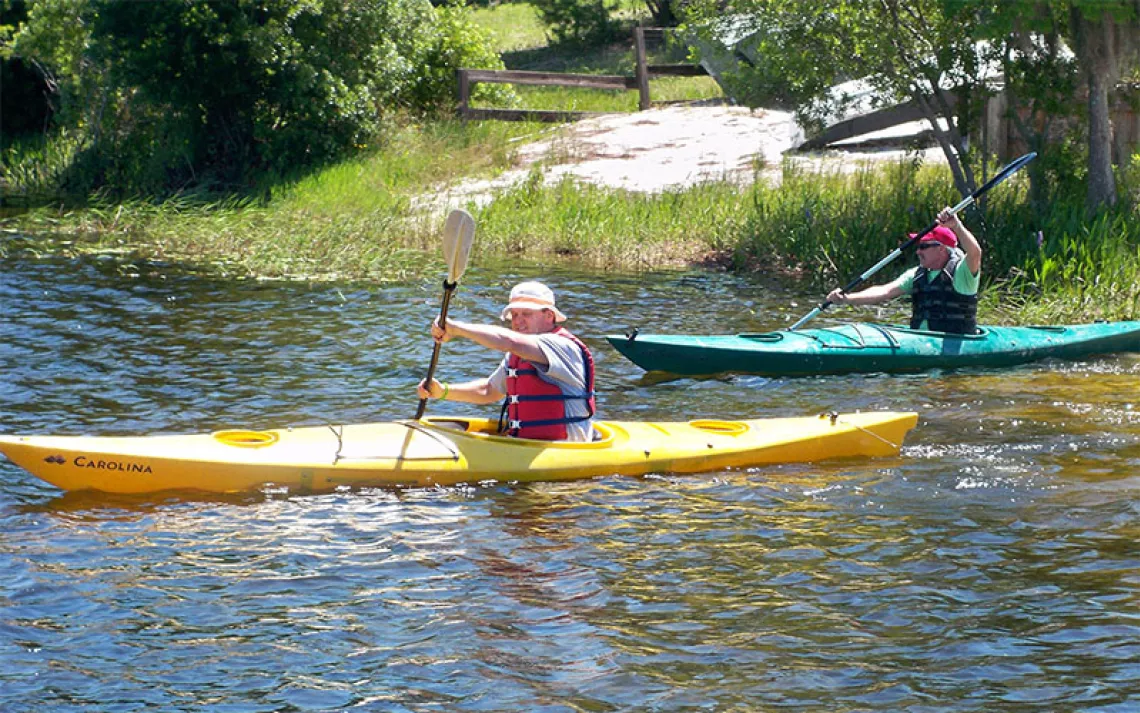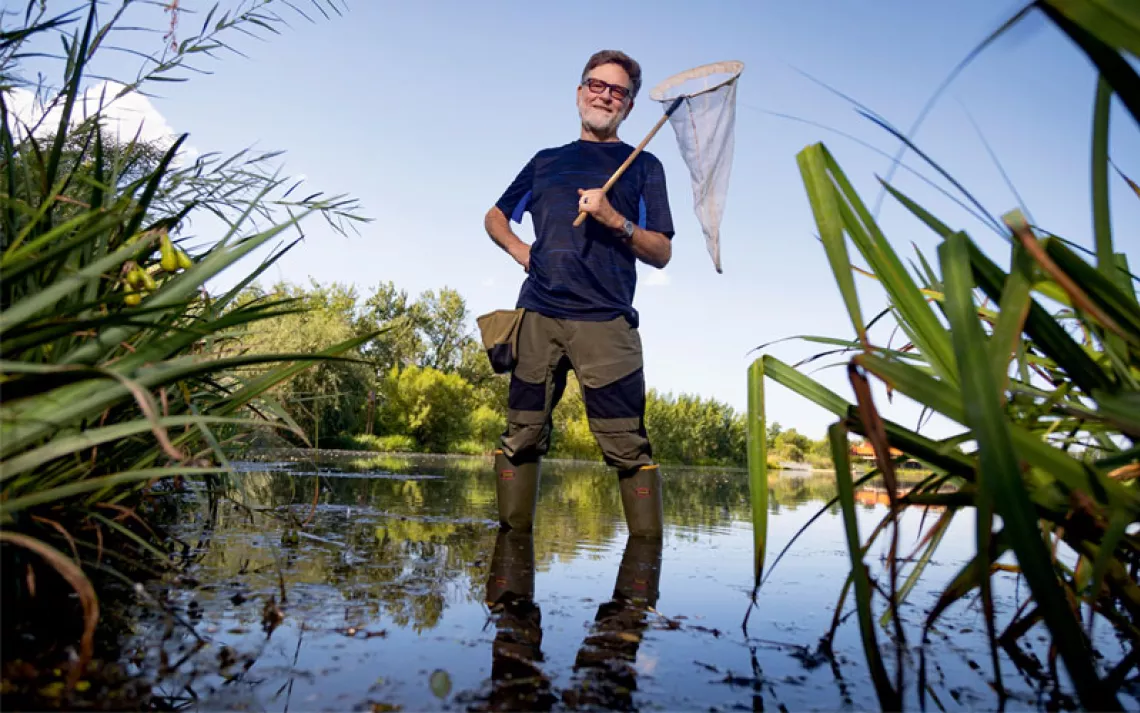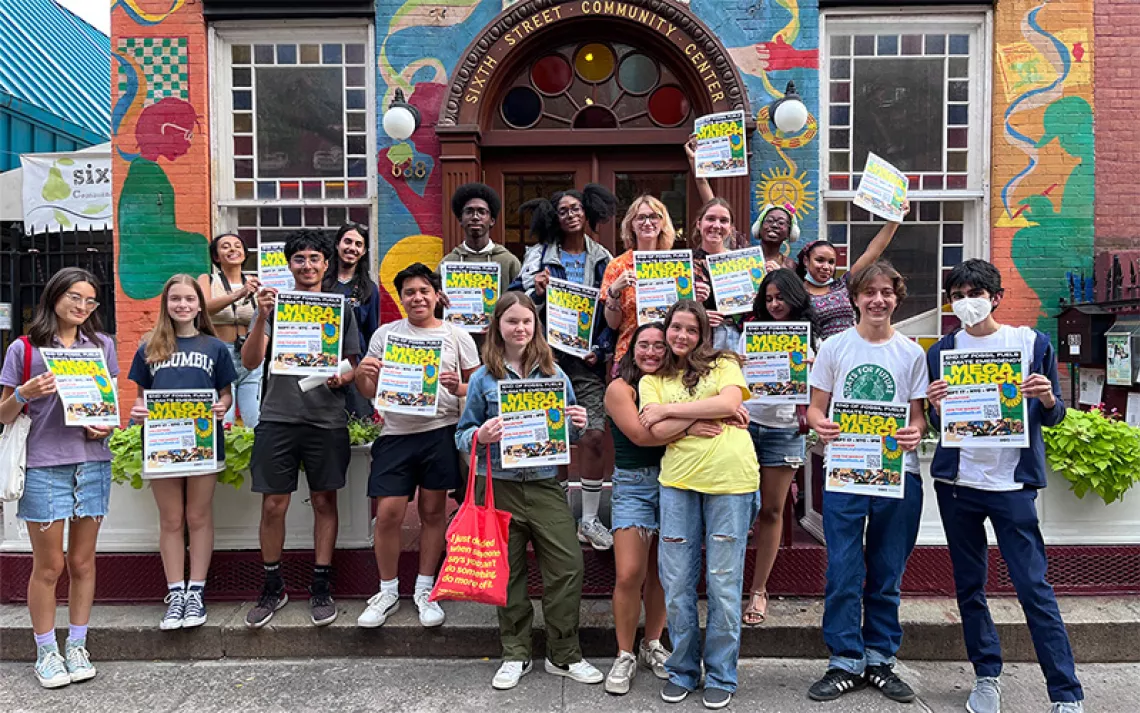Conservation Takes Root in Cambodia
A budding generation spurs environmentalism from the ground up
Lim Thona is one of Cambodia’s most knowledgeable experts on cave-dwelling bats.
Just three years ago, she was teaching science at an international primary school after earning her undergraduate degree in chemistry. She had never studied bats or anything related to Cambodia’s rich biodiversity. But as of early 2015, she had earned a master's in biodiversity conservation thanks to a remarkable program that's cultivating a new generation of scientists and conservationists in a corner of Southeast Asia where environmental expertise is sorely lacking.
“Before I began my graduate work, I had no idea what conservation was and what practicing scientists do,” Thona says. After learning about the biodiversity conservation program at the Royal University Of Phnom Penh (RUPP), she decided to find out. She left her teaching position in 2013, and with a scholarship from USAID-Cambodia HARVEST, was able to pursue an education in conservation science. “[At RUPP] I started to love nature and developed my dream to be a plant and wildlife researcher.”
Thona’s previous lack of knowledge about Cambodia’s ecology is not unusual. The country’s educational system—and its entire social and economic infrastructure—is still recovering from the Khmer Rouge regime of the late 1970s, which eradicated an entire generation of educated Cambodians. Until recently, the country had virtually no body of research, trained national conservationists, or opportunities to pursue higher education. Many Cambodians still struggle to receive a basic education. USAID reports that 96 percent of school-age children are enrolled in primary education, but only 34 percent are enrolled in lower secondary (grades 7 to 9) and 21 percent in upper secondary (grades 10 to 12). In 2012, the national adult literacy rate was 73.9 percent.
Thona’s thesis was the first in the country to focus on Cambodia’s cave-dwelling bats. She spent two years examining ecological stresses on delicate cave ecosystems. “Bats are thought of as common animals, so they do not get priority for conservation in public thought,” she says. “My studies at RUPP helped me understand key conservation issues in Cambodia and the efforts needed to resolve them.” Her research has shone a light on Cambodia’s caves and karsts, identifying human threats to bats, such as hunting and cave tourism.
“The [ecosystems Thona studied] support exceptional but highly vulnerable bat faunas,” explains Dr. Neil Furey, an Irish conservationist and bat researcher who was Thona’s thesis supervisor. “We learned quite a bit from Thona’s work that will be useful for future conservation.”
Furey is affiliated with Fauna & Flora International, an environmental organization that partnered with Thona’s university in 2005 to create the biodiversity conservation master's degree (Cambodia's first master of science degree). This collaboration also created Cambodia’s first peer-reviewed science journal, which prioritizes publishing scholarship from Cambodians like Thona, as well as a zoological resource center and graduate research group.
“When we first spoke to the university, we saw that there was great hunger [for biodiversity education],” says Furey, who headed the groundbreaking partnership from 2009 to 2013. Despite Cambodia’s relative political stability, its lack of infrastructure means most conservation work is still carried out by foreign organizations and scientists like Furey.
But RUPP’s biodiversity conservation program is starting to change that. “Several of the courses I handed over after leaving the project are now taught by students who completed the program a number of years ago,” says Furey. “More than ever, students are the program.” Thona is among the growing group of young Cambodians whose research is bringing conservation into national consciousness.
That new consciousness is desperately needed. Since the Khmer Rouge was officially ousted in the late 1990s, Cambodia’s economy has expanded rapidly—and so has environmental degradation. More than 70 percent of Cambodia’s forest cover was intact in 1973. Now only 48 percent remains. Hydropower dams, illegal logging, poaching, overharvesting, and industrial development swallow natural resources and threaten biodiversity.
“By joining [the biodiversity conservation] program, students help build Cambodian conservationist capacity and research in-country,” explains Thaung Ret, a marine systems specialist and research officer at RUPP. Like Thona, Ret graduated with her master’s degree in 2015. Before arriving in Phnom Penh for her advanced degree, Ret could not swim, let alone scuba dive, but she learned to do both to research the fish and invertebrates of Cambodia’s coral reefs.
Both Thona and Ret concluded in their research that more studies are necessary to understand Cambodia’s environment and the threats human actions pose. And greater public awareness about Cambodia’s ecosystems—from its caves to its forests to its reefs—is integral to protecting its imperiled biodiversity. To this end, national education needs to improve. In a country where where over 65 percent of the population is under the age of 30, only education can build the capacity for change.
“What students learn and study will spread not only throughout Cambodia, but to other countries in the world,” Thona says. “And this knowledge will be important not only for the young Cambodian generation but for all.”
Watch this video to learn more about the master's program at RUPP:
 The Magazine of The Sierra Club
The Magazine of The Sierra Club









